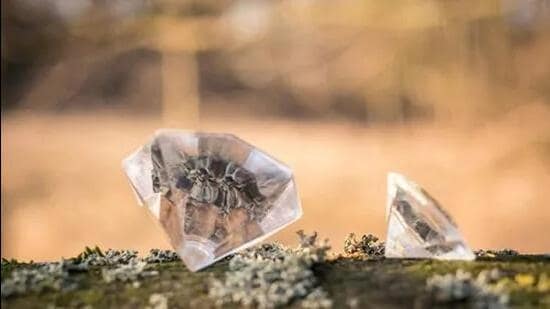For centuries, diamonds have been synonymous with love, luxury, and lasting commitment. Their natural formation deep within the Earth’s crust is a symbol of enduring strength and beauty. Yet, in recent years, a new contender has emerged in the world of fine jewelry: lab-created diamonds. These diamonds, virtually identical to their mined counterparts, have revolutionized the industry, offering an ethical, sustainable, and affordable alternative to traditional stones. But as we celebrate the rise of lab-created diamonds, one thing remains clear: they are forever.
The Science Behind Lab-Created Diamonds
Lab-created diamonds, also known as man-made or synthetic diamonds, are produced using cutting-edge technology that replicates the high-pressure, high-temperature conditions found deep within the Earth. There are two primary methods for creating these diamonds: High Pressure High Temperature (HPHT) and Chemical Vapor Deposition (CVD). Both processes result in diamonds that are chemically, physically, and optically identical to mined diamonds.
In the HPHT method, carbon is exposed to extreme pressure and temperature, forcing it to crystallize into diamond form. The CVD process, on the other hand, involves placing carbon-rich gas in a chamber and using heat to break it down, allowing carbon atoms to deposit onto a diamond seed and form the crystal.
The result? A lab created diamonds are forever that is indistinguishable from one sourced from nature, but with a far smaller environmental footprint.
The Environmental Benefits
One of the most compelling reasons people are turning to lab-created diamonds is the environmental impact of traditional diamond mining. Mining for natural diamonds is resource-intensive, often requiring the excavation of vast amounts of earth, disrupting ecosystems, and consuming large quantities of water and energy. Additionally, many mining operations, particularly in developing countries, have been linked to unethical labor practices and environmental degradation.
Lab-created diamonds, in contrast, offer a sustainable solution. Their production requires far less land disturbance, uses minimal water, and generates fewer emissions. By choosing lab-created diamonds, consumers are making an environmentally conscious choice without compromising on beauty or quality.
Ethical Considerations
Beyond the environmental advantages, lab-created diamonds also present an ethical alternative to mined diamonds. The diamond mining industry has long been associated with controversial issues such as “blood diamonds” or conflict diamonds—stones mined in war zones and sold to fund violent conflicts. Despite the efforts of the Kimberley Process to regulate diamond sourcing, these concerns remain, casting a shadow over the mined diamond industry.
Lab-created diamonds are free from these ethical concerns. As they are made in controlled environments, there is no risk of contributing to conflict or exploitation. For consumers who prioritize ethical sourcing, lab-created diamonds offer peace of mind.
The Cost Factor
When it comes to price, lab-created diamonds offer a significant advantage over their mined counterparts. Due to their more efficient production process, lab-created diamonds are generally 20-40% less expensive than natural diamonds of similar size and quality. This price difference allows buyers to purchase a larger or higher-quality diamond for the same budget, making luxury more accessible to a broader audience.
This cost-effectiveness is especially appealing for young couples looking to purchase engagement rings or for anyone seeking to make a statement without breaking the bank. In addition, the lower price tag allows consumers to invest in other sustainable or luxury options, such as better-quality metal settings or conflict-free gemstones.
A Lasting Legacy
The adage “diamonds are forever” reflects their enduring beauty and symbolism. Lab-created diamonds embody the same timeless qualities as natural diamonds—brilliance, clarity, and durability. A lab-created diamond is still a real diamond, one that will stand the test of time, remaining as brilliant and flawless as the day it was set.
Furthermore, lab created diamonds are becoming increasingly popular as heirloom pieces. Just as mined diamonds are passed down through generations, lab-created diamonds can be cherished and preserved as part of a family legacy. Their longevity ensures that they will continue to shine and represent the love and commitment they were meant to symbolize.
The Future of Diamond Jewelry
As consumer preferences shift toward sustainability and ethical responsibility, the demand for lab-created diamonds is expected to grow. Major jewelry brands and designers are already incorporating these diamonds into their collections, offering consumers an array of stylish, high-quality options. With increasing awareness of environmental issues and a growing desire for ethical luxury, lab-created diamonds are poised to become a dominant force in the jewelry industry.
Conclusion: A New Era for Diamonds
Lab-created diamonds are not just a passing trend—they are a new chapter in the story of diamonds. They provide the same lasting beauty and symbolic significance as natural diamonds, with the added benefits of sustainability, ethical sourcing, and affordability. As technology advances and the jewelry market evolves, lab-created diamonds are set to become a permanent fixture in the world of fine jewelry.
In the end, whether natural or lab-created, diamonds will always be forever. But with lab-created diamonds, the future looks brighter—for both the consumer and the planet.

